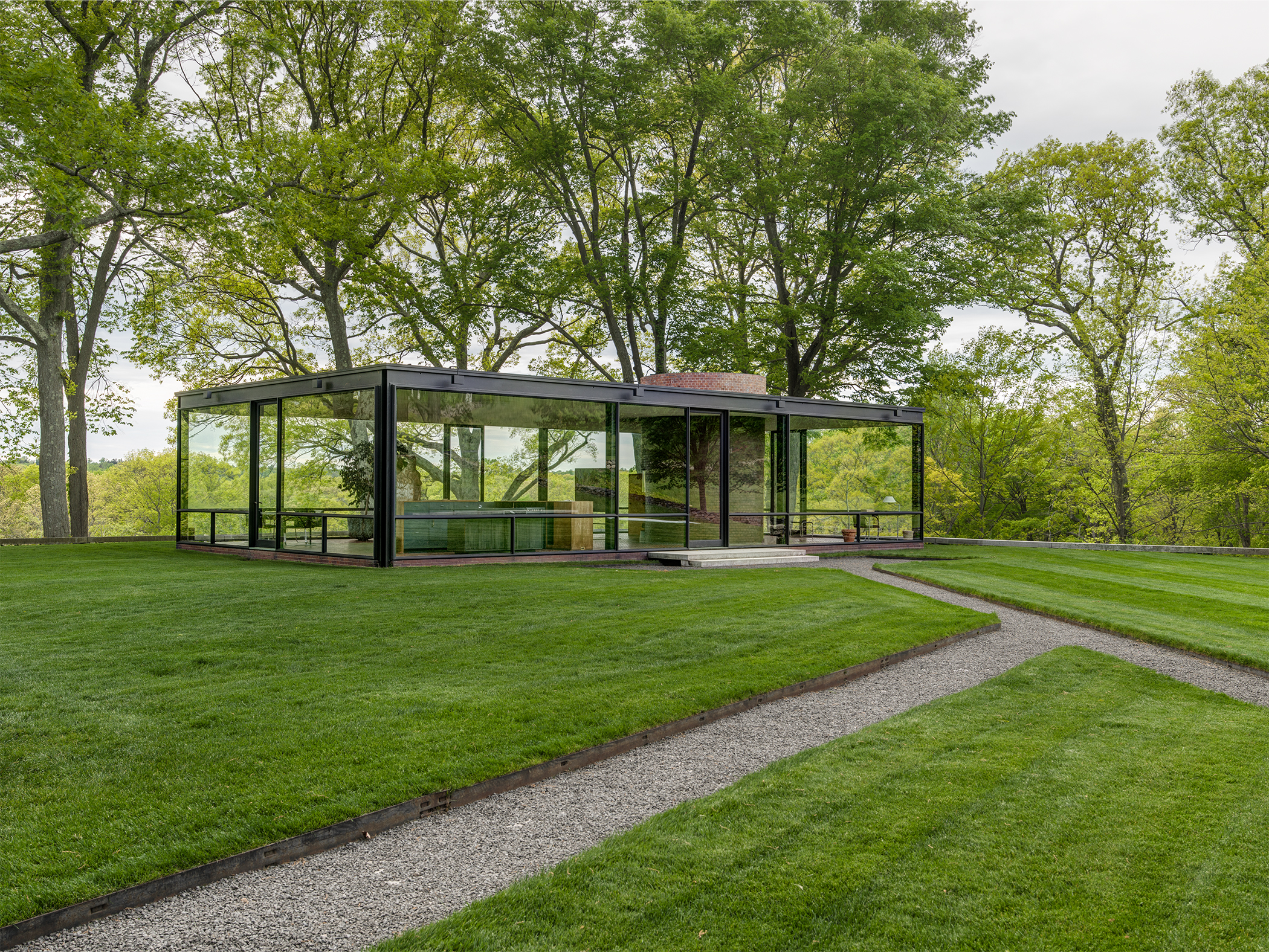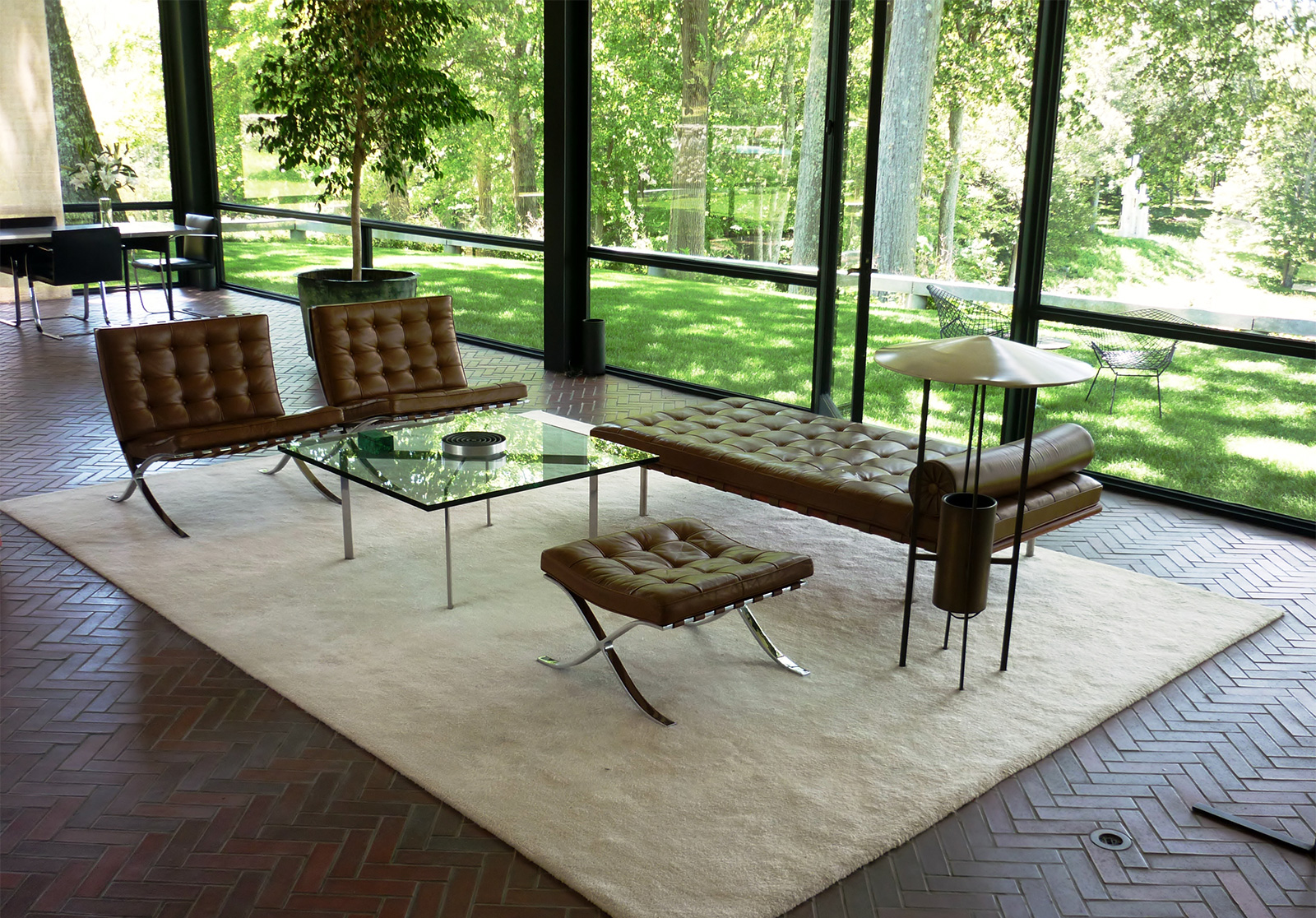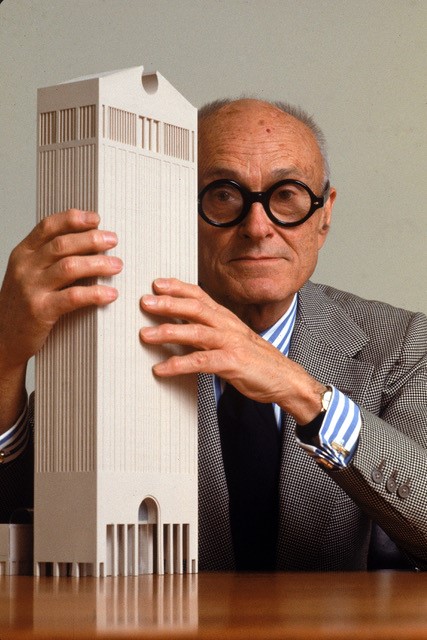ADULT SCHOOL TAKING A LOOK INTO THE GLASS HOUSE
On Friday, Nov. 2, climb aboard a bus with the South Orange-Maplewood Adult School and go see a world-famous house in New Canaan, CT., a house that is almost not there.
No walls, all windows, The Glass House was built by architect Philip Johnson some 70 years ago on a grassy knoll overlooking his 49-acres of woodlands. It's the set piece for a unique architectural experience now owned by the National Trust for Historic Preservation and open to the public on a limited basis (the site closes down in the winter). Johnson eventually incorporated 13 other structures, including a 1905 farmhouse, galleries for his painting and sculpture collections, and an alter-ego for his all-glass house: a nearby all-brick house that holds all the support systems for its see-through sibling.
Johnson's own esthetics are not quite as transparent. Never mind that he gets credit (or blame: see below) for bringing the International Style into residential architecture at Mid-Century, Johnson never quite let go of good old traditional ideas and motifs. Consider New York's AT&T building (now 550 Madison) shaped like a 37-storey Chippendale clock. Or the bedroom in the Brick House that's dressed in print silk Fortuny fabrics and fit out in novel furniture by Italian architect Gaetano Pesce.
Here's Johnson himself, explaining his penchant for time- and style-traveling: "A very few years after I moved in, I changed everything on the inside of the Brick House in order to express what I was working on at the time, which was another wave of emotion that overcame me for the arch and for the eighteenth-century and for Sir John Soane, the great English architect, so I started deliberately copying whatever I felt like it."
Earlier in his career, Johnson had been copying Bauhaus guru Ludwig Mies van der Rohe, had worked with him, in fact, and had Mies-designed furniture in his New York apartment (when Johnson was curator of architecture at the Museum of Modern Art). Van der Rohe was chief among the European architects and artists who fled the Nazis and brought what became the International Style to the US. Tom Wolfe, the late author, art-and-social critic, had another description for the International Style: "...sensory deprivation (caused) by the whiteness & lightness & leanness & cleanness & bareness & spareness of it all," Wolfe wrote in his 1981 broadside against the tide of "glass boxes" that had taken over America's skylines and routed all trace of traditional decoration.
"These are not merely my impressions, I promise you. ...one has only to go to the conferences, symposia, and jury panels where the architects gather today to discuss the state of the art. They profess to be appalled themselves. Without a blush they will tell you that modern architecture is exhausted, finished. They themselves joke about the glass boxes. They use the term with a snigger. Philip Johnson, who built himself a glass-box house in Connecticut in 1949, utters the phrase with an antiquarian's amusement, the way someone else might talk about an old brass bedstead discovered in the attic."
Wolfe may have had a point -- the Post Modernism Movement was already rising in reaction to the austerity, formality, and sameness of the International Style -- but nonetheless nearly 140,000 annual visitors make a pilgrimage to see The Glass House with Johnson's original design still in place, reports to Christa Carr, Communications Director. With 1,815 sq. ft. encased all in glass with doors opening in all directions onto the landscape, "You use a lot of Windex," she says.
Johnson would insist on an unsmudged view. As he explained, "I thought it’d be nice to have a place that you could swivel all the way around and see the whole place...I claim that’s the only house in the world where you can see the sunset and the moonrise at the same time, standing in the same place. Because that’s an impossibility in any house; you have to walk to another room to see one or the other of those effects. But I get it all the time here in the Glass House."
Visitors on The Adult School's two-hour tour will get it all, too: the Glass House, painting and sculpture galleries, as well as the pavilion inspired by Frank Stella, known as Da Monsta, plus a three-course lunch at Spiga Wine Bar & Salumeria, and a tour of Gores Pavilion, a pool house designed by Johnson and Landis Gores, one of the celebrated "Harvard Five" architects who made New Canaan a focus of the mid-century modern movement. Deadline to register for the "Mad About Mid-Century Modern" excursion is Oct.2.
###
NEWS-RECORD
SMARTEN UP @ THE ADULT SCHOOL
September 20, 2018
Rose Bennett Gilbert



